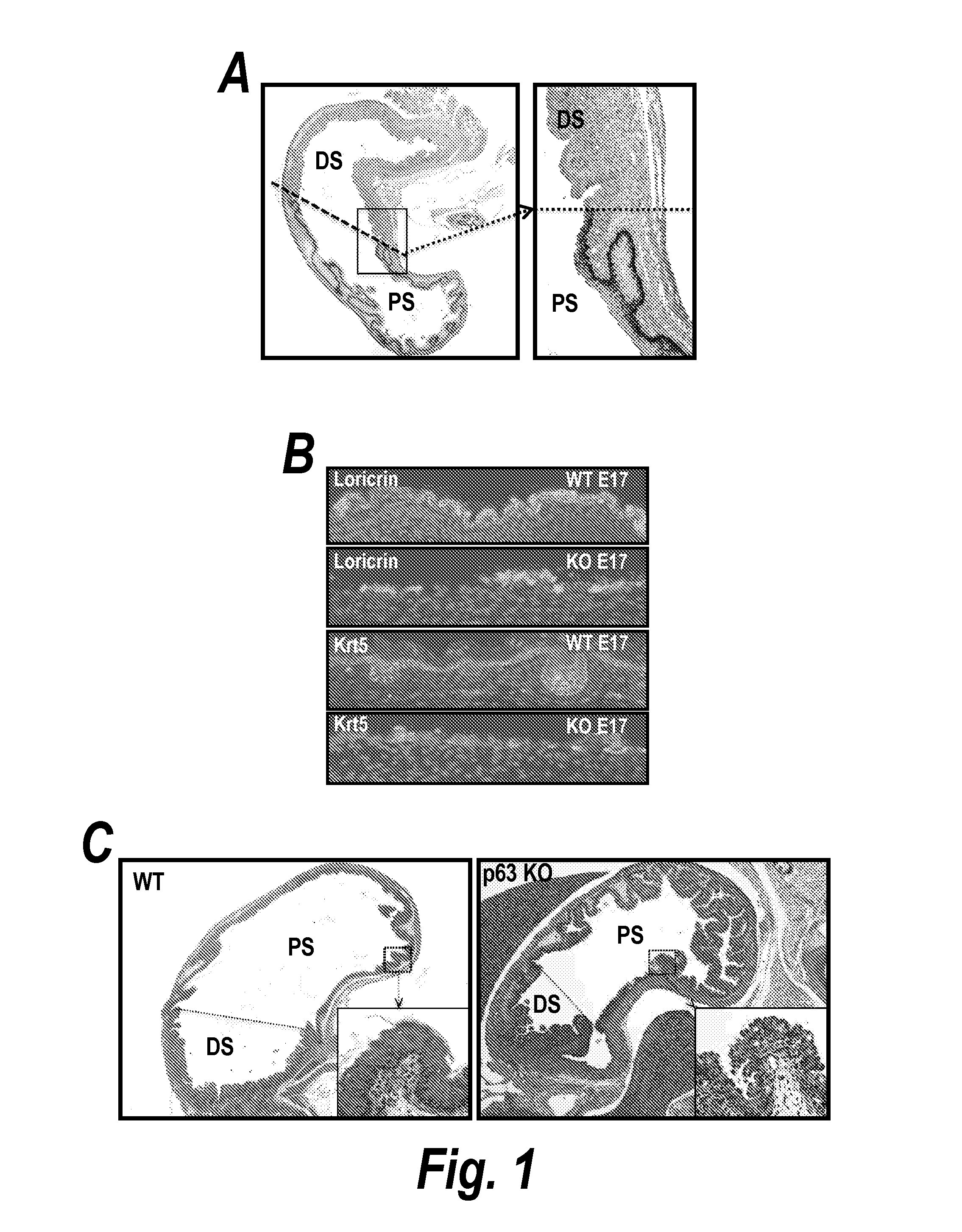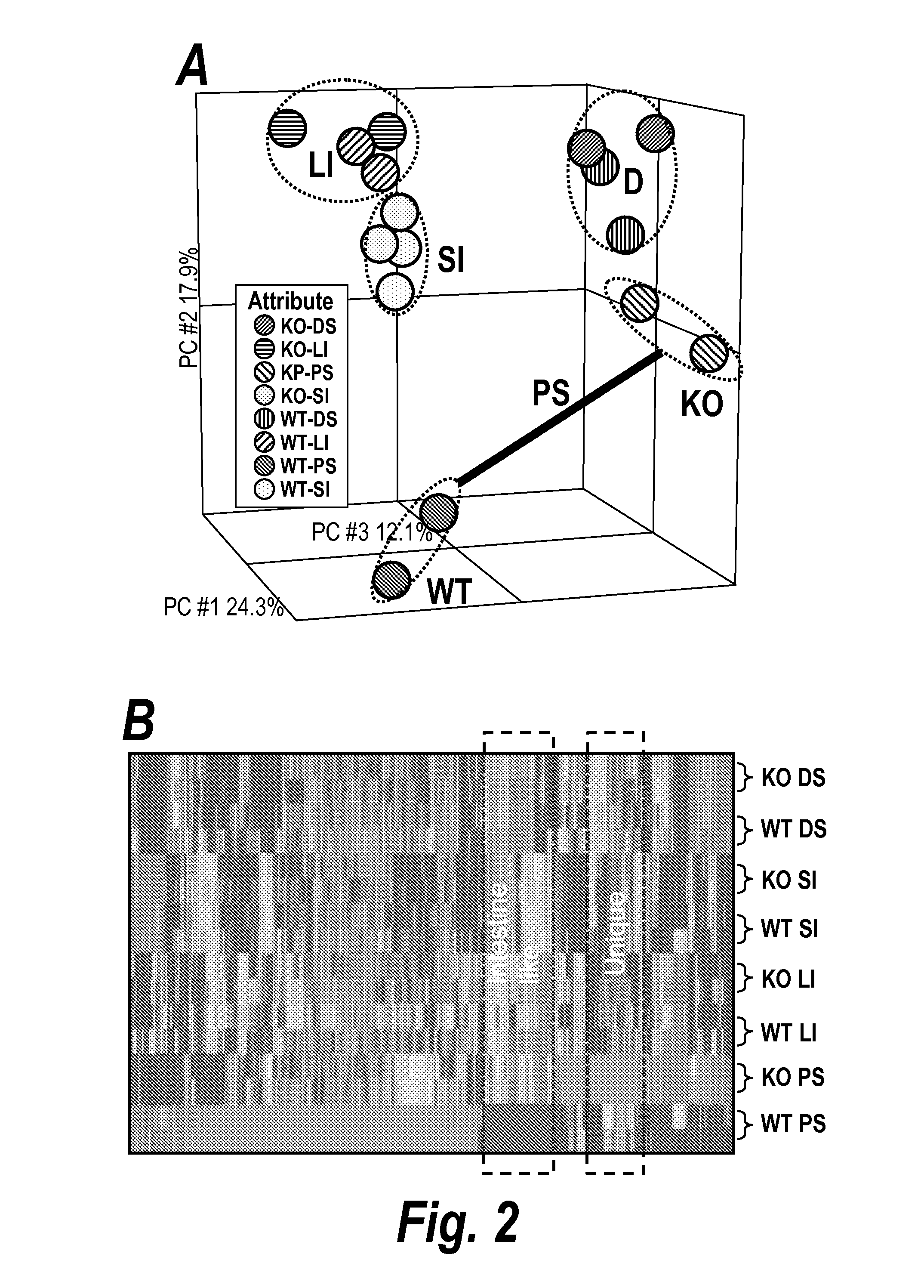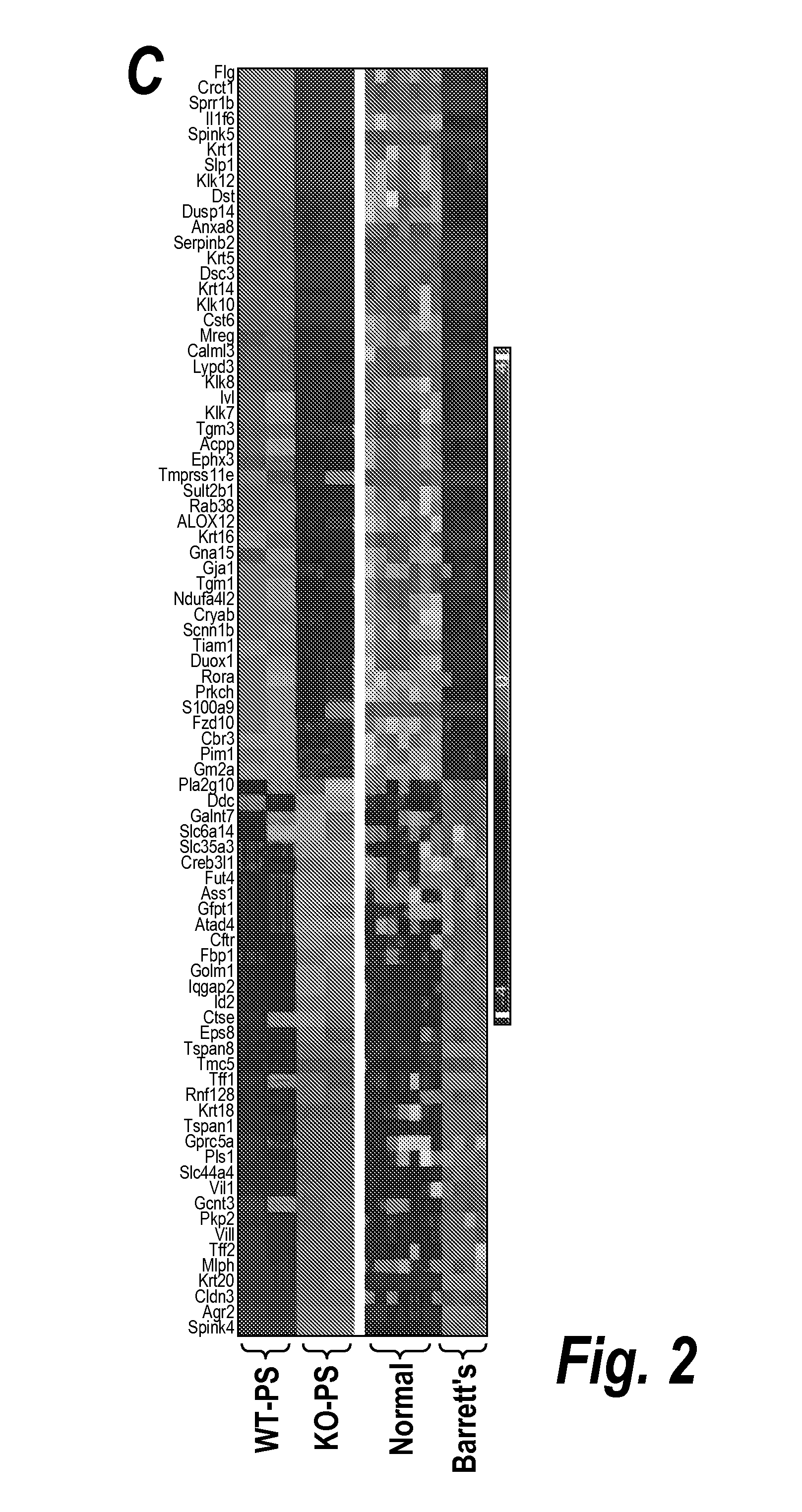Methods and reagents for detection and treatment of esophageal metaplasia
a technology for esophageal metaplasia and reagents, which is applied in the field of methods and reagents for detection and treatment of esophageal metaplasia, can solve the problems of not having the opportunity to rapidly develop drug candidates with selectivity and in vitro efficacy, and achieve the effects of preventing growth and/or differentiation, preventing cancer progression, and large patient population
- Summary
- Abstract
- Description
- Claims
- Application Information
AI Technical Summary
Benefits of technology
Problems solved by technology
Method used
Image
Examples
example 1
Gastric and Esophageal Metaplasia in the p63 Null Mouse is Similar to that Seen in Barrett's Metaplasia
[0205]The squamocolumnar junction present at the distal esophagus in humans is shifted posteriorly in mice due to an extension of squamous epithelium to the gastric midline (FIG. 1a). As with all stratified epithelia, the p63 gene is expressed in the basal cells of the esophageal and gastric squamous epithelia (Yang et al. Mol. Cell. 1998; 2:305-16) (FIG. 1a). In p63 null mice, embryos develop to term but are born without an epidermis, mammary or prostate glands, and virtually all other stratified epithelial are either absent or highly deranged (Yang et al. 1999, supra). The epidermis, for instance, begins its normal stratification from a single layer of ectoderm at embryonic day 13-14 (E13-14) and by E17 is a squamous epithelium with suprabasal expression of differentiation markers such as loricrin (FIG. 1b). However, the p63 null epidermis begins to degrade from that point on as ...
example 2
Gene Expression of Metaplasia the in p63 Null Mouse is Similar to that Seen in Barrett's Metaplasia
[0206]To more fully characterize the metaplasia in the proximal stomach of the p63 null embryo, its gene expression profile was compared with those of specific regions of the gastrointestinal tract in mutant and wild type animals. In brief, RNA was extracted from microdissected tissues and used to probe expression microarray chips (Mouse Genome 430 2.0 Array, Affymetrix). Unsupervised principal component analysis of these data revealed that the wild type and p63 null colon, small intestine, and distal stomach formed concordant pairs of overall gene expression (FIGS. 2a, 2b). In contrast, the comparisons of gene expression between wild type and p63 null proximal stomach revealed stark differences, thus the observed metaplasia was clearly distinct from the indigenous squamous epithelia at this site. Moreover, a broad comparison of the gene expression profiles of the metaplasia in the p63...
example 3
Metaplasia Evolves from a Car-4-Positive, Primitive Embryonic Epithelium
[0207]To identify the source of the metaplasia evident in the p63 null proximal stomach, known biomarkers of Barrett's metaplasia were used to perform a retrospective analysis of embryological development. Using antibodies to claudin 3 (Cdn3), keratin 7 (Krt7), and carbonic anhydrase 4 (Car4) that show robust staining of E18 metaplasia (FIG. 3a), it was demonstrated that metaplasia was present as early as E14, when the metaplastic tissue in the stomach presents as a highly proliferative columnar epithelium marked by Car4, Cdn3, and Ki67 expression (FIG. 3b). One day earlier in development, at E13, Car-4-positive cells were detected in a single layer in the stomach of the mutant embryos on an extended region of basement membrane of the proximal stomach (FIG. 3c). Significantly, the wild type E13 embryos also showed a similar population of Car-4-positive cells at the basement membrane of the proximal stomach (FIG....
PUM
| Property | Measurement | Unit |
|---|---|---|
| Fraction | aaaaa | aaaaa |
| Surface | aaaaa | aaaaa |
| Level | aaaaa | aaaaa |
Abstract
Description
Claims
Application Information
 Login to View More
Login to View More - R&D
- Intellectual Property
- Life Sciences
- Materials
- Tech Scout
- Unparalleled Data Quality
- Higher Quality Content
- 60% Fewer Hallucinations
Browse by: Latest US Patents, China's latest patents, Technical Efficacy Thesaurus, Application Domain, Technology Topic, Popular Technical Reports.
© 2025 PatSnap. All rights reserved.Legal|Privacy policy|Modern Slavery Act Transparency Statement|Sitemap|About US| Contact US: help@patsnap.com



